
Contents
CHAIR’S WEEKLY MESSAGE
“Minds Moving the Cosmos”
Student college athletes face a number of challenges. While they do benefit from access to a selection of resources that are not equally shared by other students, they also have the demands of training and competition, including travel, physical injury, and physical exhaustion. I myself was not a student-athlete, and in fact I will freely admit that I once personally held certain opinions about student-athletes based on cultural stereotypes. Such are the perils of youth and ignorance, of which I am not proud. My opinions went so deep that I eschewed routine exercise during college, thinking of it only as a distraction.
While I certainly knew several student-athletes during my college days, my opinions shifted after college. I would eventually go on in graduate school to meet and marry a fellow physicist whose education was supported by an athletic scholarship. My friend, then fiancée, then spouse would help me to understand all the good athletic scholarships, and athletics, can do. Athletics, combined with academics, can open doors previously shut to students. Nonetheless, we must recognize that all benefits come with conditions.
Since becoming a professor, I have had the chance to interact with many student-athletes in my classes. In fact, the finest student I ever worked with in PHYS 1308 (General Physics II) was a very talented student athlete, who despite a demanding travel schedule, was an intellectual force of nature. She took all my exams on time, with remote proctoring, crushing every single one of them. She brought the same skill to homework, discussions in class and during office hours, and in other course-related activities. What complemented her learning process was her time management, which was impressive. I have never forgotten the sheer intellectual luminosity she brought to a physics class, even though she was only taking my course because it was required by her degree plan (hint: she was not a physics or biophysics major).
All of our students – not just student-athletes – face challenges. We should be attentive to those challenges while nonetheless making our standards and expectations clear and consistent. I chose to focus on student-athletes in this message for two timely reasons. First, I sat this week on a faculty panel for a Human Development class where student-athletes engaged with us about issues of time management, communication, and academics-athletics balance. Second, and coincidentally, this week began with amazing news about a former student in our department. Bryson DeChambeau, who majored in Physics while attending SMU, won the U.S. Open professional golf tournament on Sunday.
This all got me thinking especially about the many challenges student-athletes can face. Many of them are first-generation students in addition to being athlete-scholars, which burdens them with two large sets of challenges. Many of them are wrestling with the demands of scholarships, athletic performance, and academic performance. They are trying to balance training and class and study schedules. They suffer physical exhaustion, which then claws at their mental performance. Like physicists conducting research outside the university, they have to balance the demands of travel against the demand to always be present – always be physically at SMU and participating in academic life.
In this issue of the newsletter, we celebrate Bryson’s accomplishments in professional golf just a few years after his focus turned from college athlete at SMU to professional golfer. We also reflect on “what could have been,” and the physics loss that was golf’s gain.
We celebrate and learn from another important group of people in our department: post-doctoral researchers. Post-docs have their PhDs but are nonetheless still “in training” for the next step in their career, typically expected to be the pursuit of a research staff or faculty position. They occupy that awkward space between “student” and “faculty.” Existing in this kind of “professional bulk dimension between spaces” offers unique challenges and pressures.
On the academic side, we give a sneak preview our spring 2021 course offerings, so that students can start speaking with instructors and their advisors about what next moves are best for them and their degree plans. We look at a few faculty accomplishments this month, all focused around the basic theme of “it’s finally published!” We also look ahead at upcoming events in the Astrophysics Lunch and Department Speakers Series.
Every one of our students is deserving of our attention. Take a moment today to ask yourself, “Do I understand my students, or am I relying on stereotypes about them?” If you’re not really sure of the answer, take a chance to get to know a few of them better. You will definitely surprise them, and they might even surprise you, too. Our job as teachers and mentors is to shape these students into world changers, and ultimately minds moving not just the world but the cosmos. We must first begin with understanding our students, if we are to understand what they will be able to accomplish.
Sincerely,

Stephen Jacob Sekula Chair, Department of Physics |
DEPARTMENT VIEWS
Post-Doc Appreciation Week: Meet our Postdoctoral Researchers
This week has been post-doc appreciation week. It’s hard to show proper appreciation for the contributions, sacrifices, and efforts of people when a pandemic is raging. However, we did decide to take the opportunity to ask each of the four post-doctoral researchers in our department a few questions so that we can all get to know them better. We also wanted to take the opportunity to learn what they think is needed to make things better for post-docs across the University. Despite answering these questions at very different times and while working from vastly different locations (the CERN laboratory in Switzerland, the Colorado Rockies, the Midwest, and Dallas, in no particular order), there were some remarkably consistent themes in the answers.
Alessandra Betti
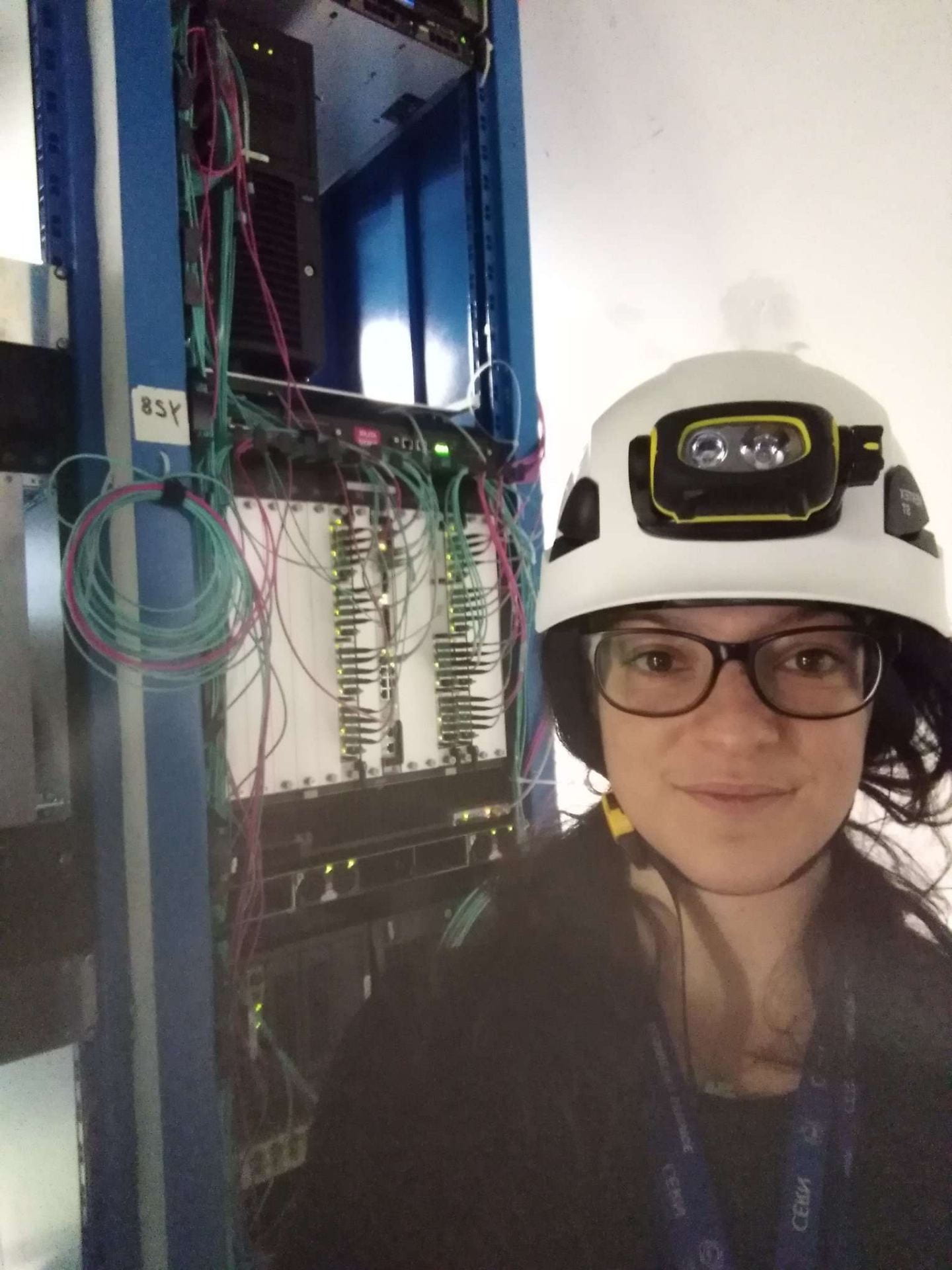 Tell us a little about yourself!
Tell us a little about yourself!
I was born in Rome, in Italy, and I did my University studies up to my Master’s degree in physics at Sapienza Università di Roma. For my PhD, I moved to Bonn, in Germany, were I spent my first and last year of PhD, with one year at CERN in between to be closer to the CERN research environment during the most active time of my PhD research activity.
Now, after all the hard work during my studies, I am really happy of being able to carry out my research almost independently and to have the opportunity to point it in the direction of my interests.
What’s something you would like us to know about you that isn’t specific to your profession, per se?
In addition to my love for physics, I also love many other things, especially activities that connect me to nature and to other people, such as practicing yoga, especially outdoor in a nice park, hiking on the lovely mountains near the Geneva area, where I currently live to carry out my research at CERN, and swimming in the beautiful sea of my birth-country when I go back there for holidays.
Timothy Hobbs
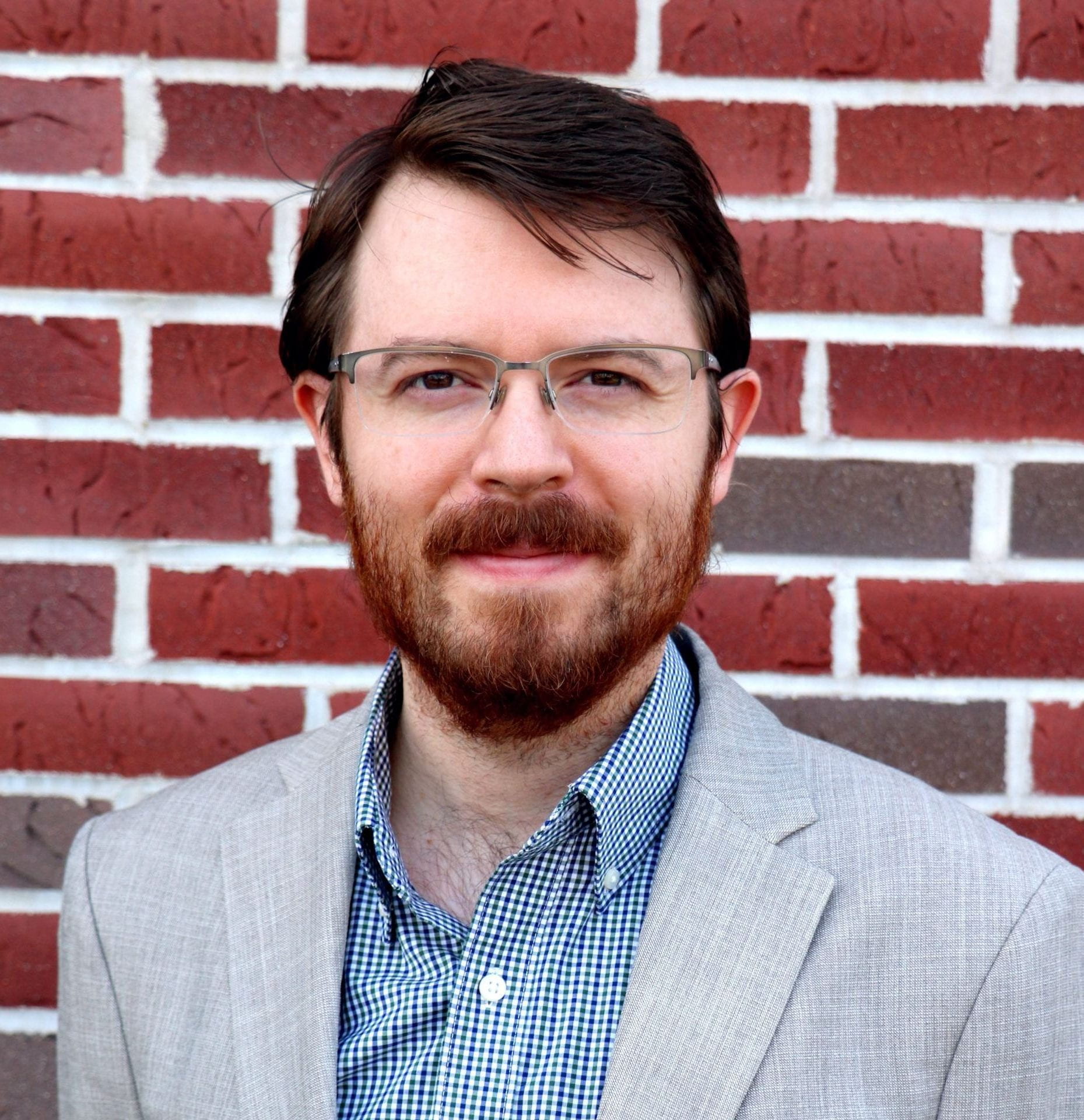 Tell us a little about yourself!
Tell us a little about yourself!
I am a QCD theorist with a background in particle phenomenology and nuclear theory. I received my undergraduate degrees in Physics and Mathematics from the University of Chicago and earned a PhD in particle/nuclear theory at the Nuclear Theory Center at Indiana University. I then worked as a Research Associate in the Nuclear Theory Group of the University of Washington in Seattle before arriving at SMU. In addition to my activities in particle theory at SMU, I also play a leadership role in the physics planning for the Electron-Ion Collider (EIC) as a Fellow of the EIC Center at Jefferson Lab. Recently, I became a Research Assistant Professor at the Illinois Institute of Technology (IIT) in Chicago, as well as an elected Member-at-Large of the APS Group on Hadronic Physics.
What’s something you would like us to know about you that isn’t specific to your profession, per se?
Not unlike the late Justice Ruth Bader Ginsberg, I love a strong cup of coffee and the keyboard works of J. S. Bach.
If you had 5 minutes with a University administrator and could ask for anything you think would better the lives of post-docs, what would you ask?
Many universities struggle to identify postdoctoral researchers within a spectrum running from PhD students to junior faculty, despite their effective role as ‘professors-in-waiting.’ SMU is no exception to this. If granted time with University administrators, I would urge them to think systematically about the institutional role of postdocs, so as to give them a clearer stated place within the University. In keeping with this, an effort should be made to consider the kinds of material benefits accorded to postdocs in order to bring them more in line with other regular staff.
Rohin Narayan
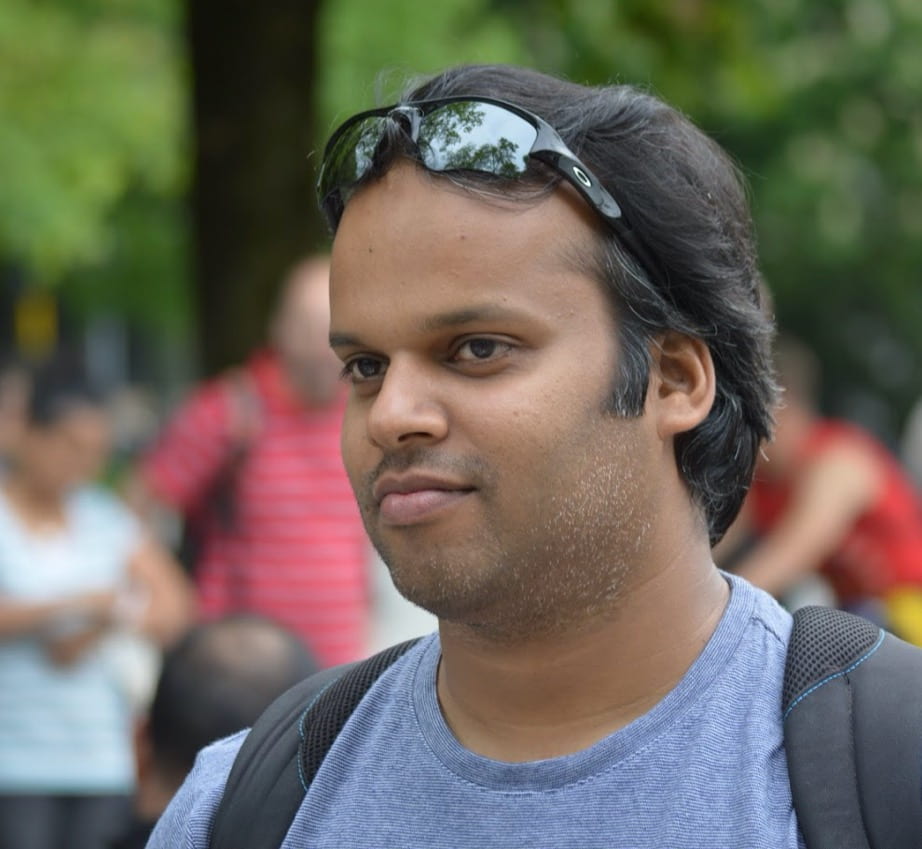 Tell us a little about yourself!
Tell us a little about yourself!
I was born and grew up in a South Indian western coastal town Calicut. This town is part of Indian state Kerala which speaks the Language Malayalam (so that’s my Mother tongue). I went to school there. This town incidentally paved way for the early European colonial connection to India. The Portugese landed there in 1498 (that’s some history 😉 ). Later I went to a nearby state Karnataka (which speaks Kannada, a language different from my Mother tongue) to do a Masters in Physics. Later I went to Germany (again a culturally and linguistically different place … more so than I had ever known until then) to do a PhD. And in the past 6 years I am in Texas on and off (in between I was in Geneva, a heavily French-speaking place where I had several long stays). Regarding my accomplishment, I am slightly on the side of impostor syndrome and it took me a while to think of something :). I would say my highest accomplishment is becoming the analysis leader of ttH multileptons analysis in ATLAS.
What’s something you would like us to know about you that isn’t specific to your profession, per se?
I used to play soccer, but these days it’s hard to find a team to play with after moving to Dallas (also, COVID times are not really helping). I am also into photography and exploring America’s national parks.
If you had 5 minutes with a University administrator and could ask for anything you think would better the lives of post-docs, what would you ask?
As you know, post-doc life is pretty hectic. However it would be nice from the University to organize social events for post-docs, to better share our work-life experiences in SMU.
Cynthia Trendafilova
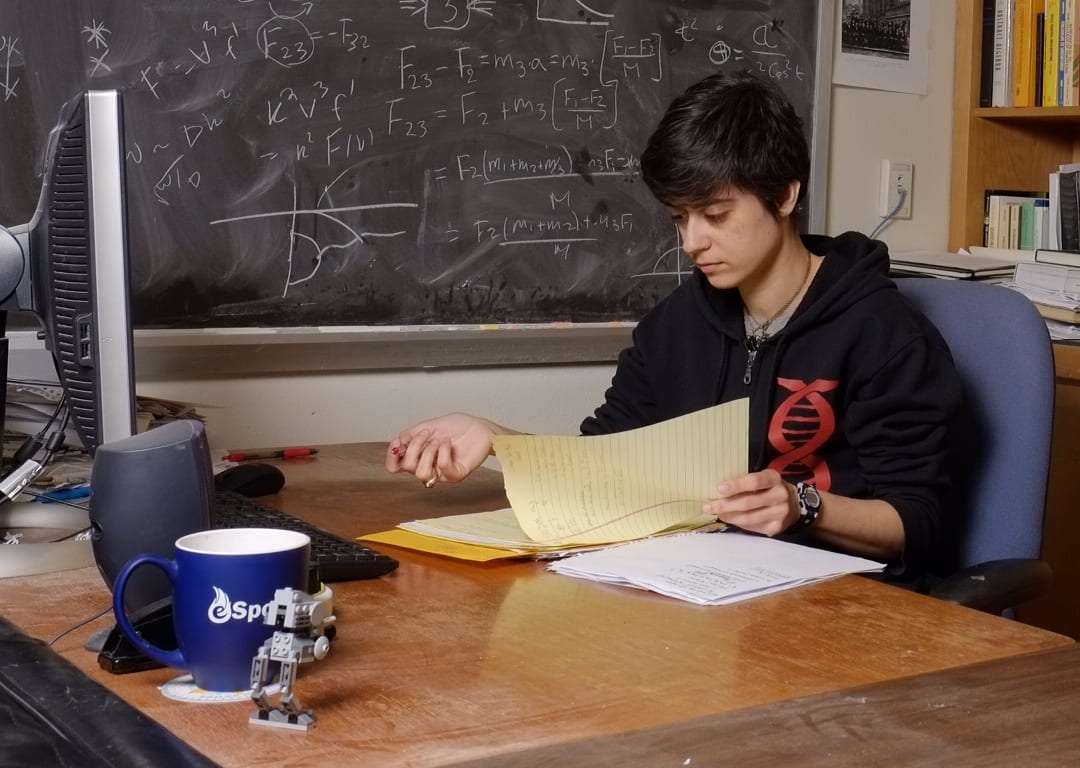 Tell us a little about yourself!
Tell us a little about yourself!
I was born in Bulgaria, but my family moved to the U.S. when I was three years old, and I’ve grown up and lived in Texas since then. I did my undergraduate studies at Texas A&M in College Station, and I got my Ph.D. at UT Austin. I earned two undergraduate degrees, in Physics and Mathematics, along with a minor in German. My father has a Ph.D. in physics as well, so I suppose that makes it a family tradition.
What’s something you would like us to know about you that isn’t specific to your profession, per se?
I’ve played video games since I was a kid, and my biggest hobby outside of work is PC gaming. Currently my favorite game is Final Fantasy XIV Online, and I’ve visited all three of its “Eorzea Cafe” themed restaurant locations in Japan.
If you had 5 minutes with a University administrator and could ask for anything you think would better the lives of post-docs, what would you ask?
If I could ask anything of the University administration, I would request improved presentation and clarity on which University benefits, policies, etc. are applicable to post-docs. Our status is not the same as faculty/staff, and sometimes I’m not certain whether something applies to us without reaching out and asking.
Physics Speaker Series Continues: Dr. Rohin Narayan (SMU) on “Associated production of top quark pairs”
The Physics Department Speaker Series continues on September 28 with our own Dr. Rohin Narayan, post-doctoral researcher at SMU, speaking on “Associated production of top quark pairs.” This seminar will mark the conclusion of our “Computing the Cosmos” series for September. This more in-depth seminar will focus on how the Large Hadron Collider is a factory for producing top quarks, the heaviest known fundamental particle, enabling for the first time the possibility of observing and studying highly rare processes involving top quarks being produced alongside other states of matter. Zoom connection information is available to SMU-affiliated participants; the public YouTube stream is available for everyone.

https://www.physics.smu.edu/web/seminars/
Next Astrophysics Lunch: Taylor Wallace Discusses Radon Plate-Out Research
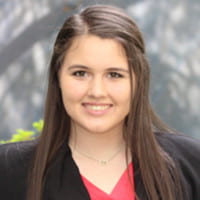 At the next Astrophysics Lunch on Monday, September 28, Biophysical Science Major and undergraduate researcher, Taylor Wallace, will discuss her studies of radon plate-out. Radon has important consequences for human health, but in the context of ultra-sensitive experiments the presence of radon, or its decay daughters, poses challenges to the ultimate reach of such experiments. Join this event to learn more about her work on this process. To learn how to connect, contact Prof. Joel Meyers.
At the next Astrophysics Lunch on Monday, September 28, Biophysical Science Major and undergraduate researcher, Taylor Wallace, will discuss her studies of radon plate-out. Radon has important consequences for human health, but in the context of ultra-sensitive experiments the presence of radon, or its decay daughters, poses challenges to the ultimate reach of such experiments. Join this event to learn more about her work on this process. To learn how to connect, contact Prof. Joel Meyers.
Learn more about the Astrophysics Lunch: https://astrohep.org/organizations/smu/dokuwiki/doku.php?id=astro_journal_club
Miss a Colloquium or Seminar? Don’t Panic … They’re Recorded!
If you missed an event in the Department Speaker Series, never fear! A positive side-effect of remote-only talks is easy recording. You can find all events so far this semester streaming online here:
Most Recent Talk: Kendrick Smith (The Perimeter Institute)
FACULTY NEWS
Book Published on Kepler/K2 Mission, Including a Chapter from Prof. Krista Smith
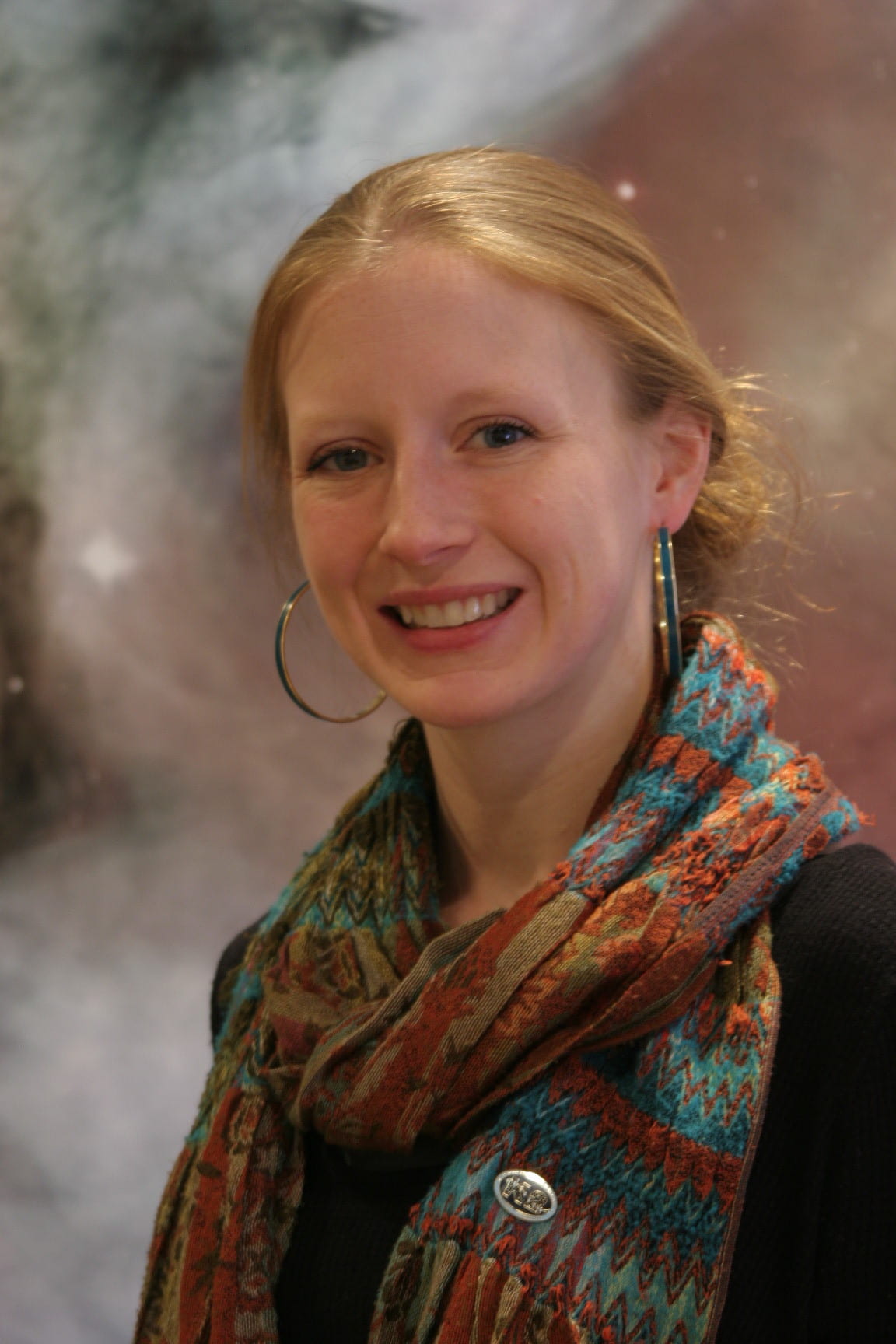 Professor Krista Smith is delighted to share with the community that a book on the Kepler/K2 mission, to which she contributed a chapter, is now published:
Professor Krista Smith is delighted to share with the community that a book on the Kepler/K2 mission, to which she contributed a chapter, is now published:
The Kepler/K2 mission finished its nine-year run in 2018, after discovering a paradigm-altering haul of exoplanets. However, the Kepler/K2 mission encompassed a lot more than just exoplanet searches. IOP Science commissioned a book about the total scientific output of the mission. I was asked to lead the writing of the chapter on extra-galactic science. This research area was an application of the instrumentation that was originally unanticipated. The Kepler instrument was the most precise and high-cadence astronomical photometer ever built. The chapter on extra-galactic science focuses on active galactic nuclei and relativistic jets, as well as supernovae and other transient phenomena described by my co-contributors to this chapter of the book.
Prof. Krista Smith
You can find more information about the book on the IOP webpage for this publication: https://iopscience.iop.org/book/978-0-7503-2296-6
Basic Research Needs Study on HEP Detector Research and Development is Public!
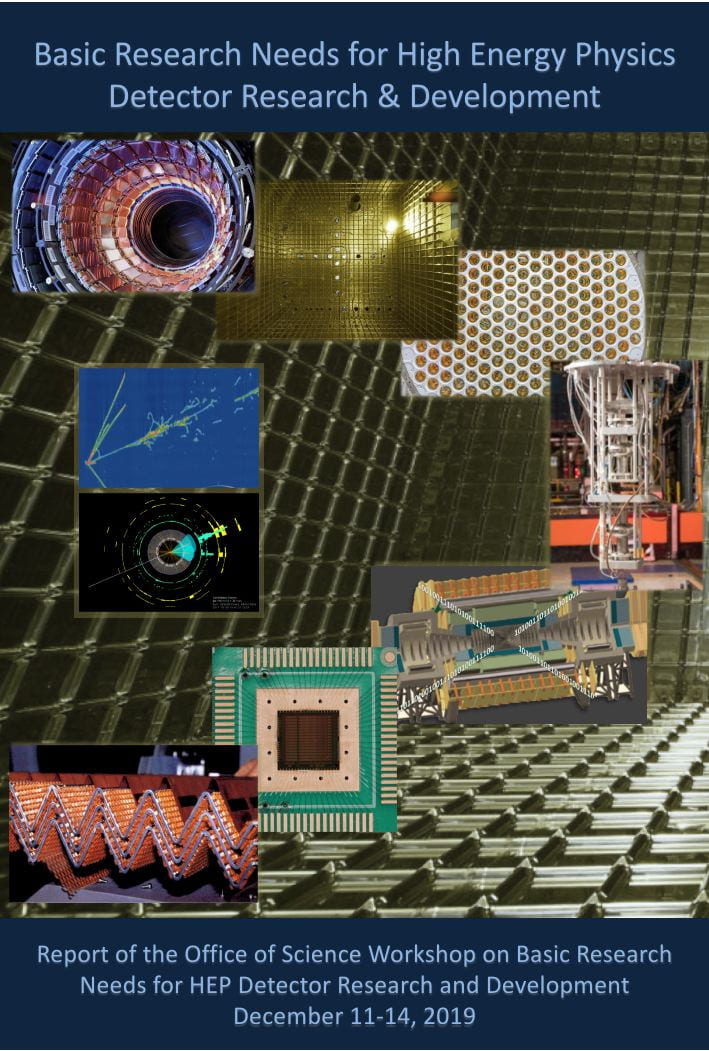 Prof. Jodi Cooley is pleased to report that a major assessment of the needs of basic research programs in High-Energy Physics (HEP) for detector research and development is now publicly available.
Prof. Jodi Cooley is pleased to report that a major assessment of the needs of basic research programs in High-Energy Physics (HEP) for detector research and development is now publicly available.
Jodi served as a co-convener of the Dark Matter physics group for the recently released Basic Research Needs (BRN) study. This nearly year-long study articulates a number of priority research directions in strategic instrumentation areas that are crucial to the pursuit of HEP science goals as outlined in the 2014 Particle Physics Projects Prioritization Panel (P5) report. The study identifies promising underlying technologies where long-term R&D could lead to transformative breakthroughs resulting in profound experimental capabilities.
The report can be read at the following website: https://science.osti.gov/hep/Community-Resources/Reports. In addition, Prof. Bonnie Fleming (Yale University), a leader of this study effort, will give the November 2, 2020 Colloquium explaining the outcome and implications of this report.
This report is based on a workshop on Basic Research Needs for High Energy Physics Detector R&D, which was held December 11-14, 2019. The goal of the BRN study was to assess the present status of the HEP technology landscape, and to identify strategic technology areas, aligned with the strengths of the US community, that future long-term R&D efforts should focus on in pursuit of the HEP science drivers identified in the 2014 P5 report. Across each of these areas, the study articulated a set of Priority Research Directions, together with research plans and infrastructure needs, to push the technology well beyond the current state of the art, potentially leading to transformative advances with broad-ranging applicability in HEP and beyond. Furthermore, the study identified a small set of high-impact instrumentation “Grand Challenges” where technological breakthroughs could lead to game-changing experimental capabilities in pursuit of HEP science goals.
Abstract of the Basic Research Needs Study on HEP Detector Research and Development
The Physics Teacher publishes “Implementing an Honors Physics Add-On Course: The SMU Experience”
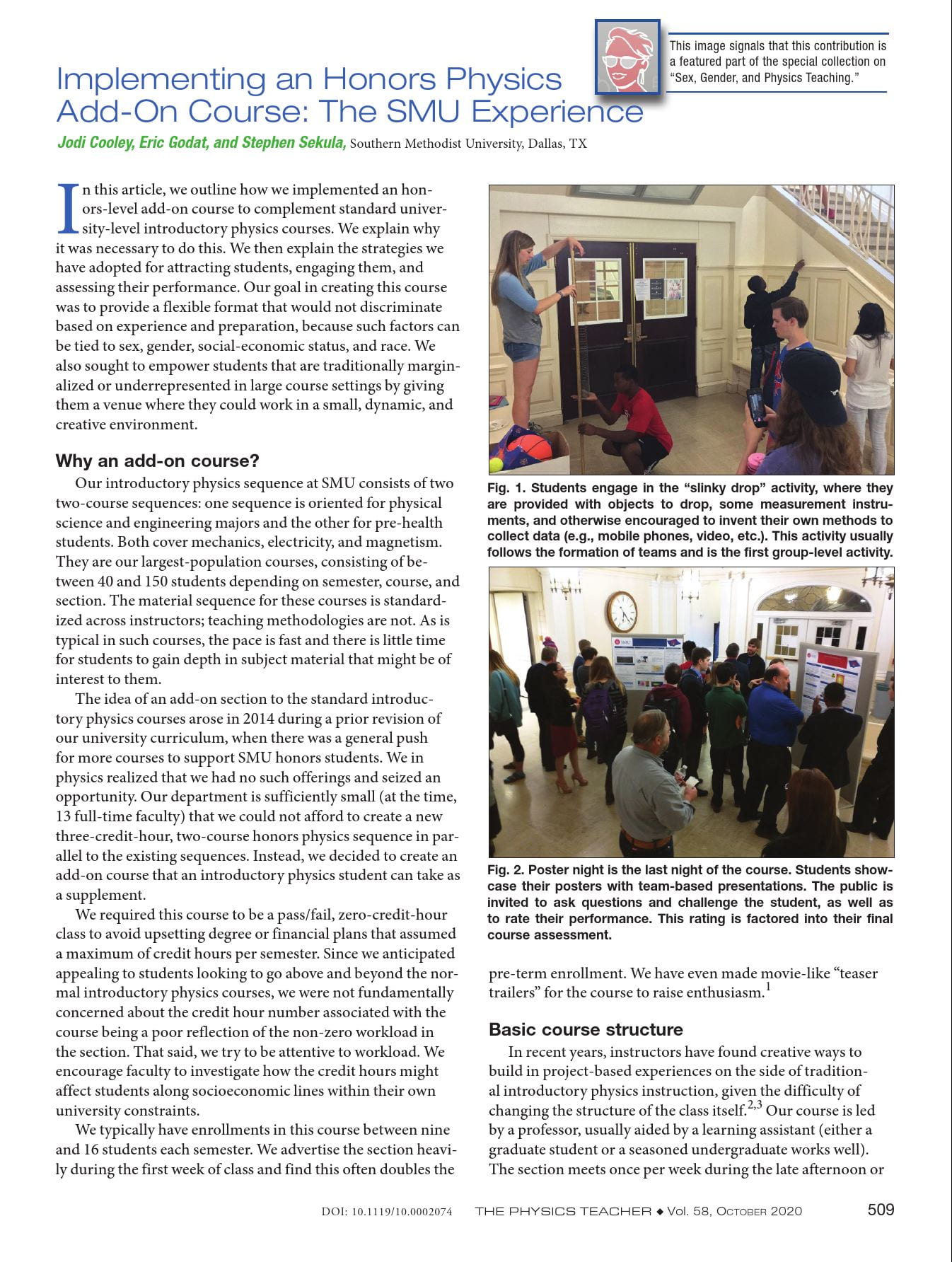 The Physics Teacher October issue features an invited article co-authored by Prof. Jodi Cooley, Eric Godat (SMU PhD’18), and Prof. Stephen Sekula on the experience of developing and implementing an Honors Physics add-on course at SMU. This article is part of an ongoing series in The Physics Teacher on “Sex, Gender, and Physics Teaching,” and was reviewed by external referees before publication. The article provides a blueprint for how such a course can be implemented, the structure of the course and how to manage each part, and challenges that remain in the implementation.
The Physics Teacher October issue features an invited article co-authored by Prof. Jodi Cooley, Eric Godat (SMU PhD’18), and Prof. Stephen Sekula on the experience of developing and implementing an Honors Physics add-on course at SMU. This article is part of an ongoing series in The Physics Teacher on “Sex, Gender, and Physics Teaching,” and was reviewed by external referees before publication. The article provides a blueprint for how such a course can be implemented, the structure of the course and how to manage each part, and challenges that remain in the implementation.
In this article, we outline how we implemented an honors-level add-on course to complement standard university-level introductory physics courses. We explain why it was necessary to do this. We then explain the strategies we have adopted for attracting students, engaging them, and assessing their performance. Our goal in creating this course was to provide a flexible format that would not discriminate based on experience and preparation, because such factors can be tied to sex, gender, social-economic status, and race. We also sought to empower students that are traditionally marginalized or underrepresented in large course settings by giving them a venue where they could work in a small, dynamic, and creative environment.
The Physics Teacher 58, 509 (2020); https://doi.org/10.1119/10.0002074
Cooley, J., Godat, E., and Sekula, S. “Implementing an Honors Physics Add-On Course: The SMU Experience.” The Physics Teacher 58, 509 (2020); https://doi.org/10.1119/10.0002074
STAFF NEWS
Staff In-Office Schedule for Week of September 28
The in-office staff schedule for the week of September 21 is as follows:
- Monday: Michele
- Tuesday: Michele
- Wednesday: Michele
- Thursday: Lacey
- Friday: Lacey
Of course, both are always available on Microsoft Teams, by Email, or by phone.
Full staff in-office calendar for September and early October:
STUDENT NEWS
We have no student news items this week, so we simply remind everyone that if you have something to share please feel free to send it along. Stories of students in research, the classroom, internships or fellowships, awards, etc. are very welcome!
Spring 2021 Physics Classes – Sneak Preview!
Updated 9/29/2020 to include the time slot of PHYS 6361 (Selected Topics in Physics, “Portals to New Physics: The Higgs Boson and Dark Matter.”)
Below is a sneak preview of the classes that will be taught by the Physics Department in the Spring 2021 term. Finalization is still in progress, and the course rosters won’t go live for a while yet, but we offer students a chance to see what’s coming up in the spring and ask questions of the Undergraduate Advisor (Prof. Cooley), Director of Undergraduate Studies (Prof. Dalley), or Director of Graduate Studies (Prof. Olness), Director of the Biophysical Science Program (Prof. Cooley), as well as the instructors themselves.
In general, you can learn more about the courses from the University Course Catalog: https://catalog.smu.edu

| Course | Title | Instructor(s) |
| PHYS 1010 | Honors Introductory Physics | Sekula |
| PHYS 1105 | Mechanics Laboratory | Guarino, Ye |
| PHYS 1106 | Electricity and Magnetism Laboratory | Guarino, Ye |
| PHYS 1303-001 | Introductory Mechanics | Cooley,Sekula |
| PHYS 1303-002 | Introductory Mechanics | Balakishiyeva |
| PHYS 1304-001 | Introductory Electricity and Magnetism | Scalise |
| PHYS 1304-002 | Introductory Electricity and Magnetism | Balakishiyeva |
| PHYS 1307 | General Physics I | Dalley |
| PHYS 1308 | General Physics II | Balakishiyeva |
| PHYS 1311 | Elements of Astronomy | Smith |
| PHYS 3305 | Introduction to Modern Physics | Kehoe |
| PHYS 3310 | Introduction to Relativity and the Physics of Waves | Vega |
| PHYS 4311 | Laboratory Physics | Ye |
| PHYS 4321 | Methods of Theoretical Physics | Scalise |
| PHYS 4392 | Introduction to Electromagnetic Theory | Dalley |
| PHYS 5383 | Advanced Quantum Mechanics | Coan |
| PHYS 6321 | Classical Mechanics | Deiana |
| PHYS 6336 | Quantum Mechanics II | Meyers |
| PHYS 6361 | Selected Topics in Physics – Portals to New Physics: The Higgs Boson and Dark Matter | Stroynowski, Cooley |
| PHYS 7305 | Methods of Theoretical Physics | Scalise |
| PHYS 7312 | Electromagnetic Theory II | Nadolsky |
| PHYS 7315 | Quantum Field Theory II | Vega |
ALUMNI NEWS
If you are an alum of the doctoral, masters, majors or minor programs in Physics at SMU, or have worked in our program as a post-doctoral researcher, and wish to share news with the community, please send your story to the Physics Department and we’ll work with you to get it included in a future edition.
Bryson DeChambeau wins the U.S. Open Golf Tournament – “Surreal,” says Bryson.
There are so many times I relied on science and it worked, every time.
Bryson DeChambeau, post-victory press conference, September 20, 2020
 Bryson DeChambeau, who was a major in Physics at SMU before starting a professional career in golf in 2015, won the U.S. Open tournament on Sunday, September 20, 2020. This victory marks his first major championship but also put him in a highly elite category of player. As an amateur, Bryson was the fifth player in history to win both the NCAA Division I Championship and the U.S. Amateur in the same year. His new victory makes him only the third player to have won all three of these championships, after Jack Nicklaus and Tiger Woods. He is also now only the sixth player to win both the U.S. Amateur and U.S. Open.
Bryson DeChambeau, who was a major in Physics at SMU before starting a professional career in golf in 2015, won the U.S. Open tournament on Sunday, September 20, 2020. This victory marks his first major championship but also put him in a highly elite category of player. As an amateur, Bryson was the fifth player in history to win both the NCAA Division I Championship and the U.S. Amateur in the same year. His new victory makes him only the third player to have won all three of these championships, after Jack Nicklaus and Tiger Woods. He is also now only the sixth player to win both the U.S. Amateur and U.S. Open.
An article about Bryson in the Global Golf Post in 2019 provided an SMU-centric context on his sudden turn to professional golf and his meteoric rise since that decision:
Ryszard Stroynowski, professor of experimental physics at Southern Methodist University in Dallas, admits to being slightly disappointed in his former student Bryson DeChambeau.
Green Jr., Ron. “Scientist with a Heart: The Method to DeChambeau’s Madness Bears Fruit”. Global Golf Post. February 5, 2019.
Like others at SMU, Stroynowski is happy for DeChambeau’s success as a golfer, the 25-year-old having climbed to fifth in the world ranking, but there’s a twinge of regret about the road not taken.
“I was hoping he would become a scientist,” Stroynowski says.
Dr. Roberto Vega, associate professor of theoretical physics at SMU, agrees.
“He could have been successful in physics,” Vega says. “He’s a serious thinker. He was a serious student. He wanted to know. He wanted to understand.”
Physics’ loss is golf’s gain.
Our loss was indeed golf’s gain, as Bryson again demonstrated spectacularly this past Sunday. His power-driven performance at the U.S. Open delivered a major and decisive tournament victory. The player known as “The Scientist” has done it again!
Check out Bryson’s post-victory press conference.
THE BACK PAGE
Fermi Problem: DeChambeau Drive
During the U.S. Open, professional golfer Bryson DeChambeau hit the ball so hard that his average distance for a drive was 326 yards, a record average distance for a U.S. Open champion. Consider a single drive that hurls the ball 360 yards from the tee. Estimate the maximum speed (in either mph or kph) with which the golf ball must be leaving the tee to accomplish this feat.
Submit your answers to Prof. Randy Scalise, the de facto department “Puzzle Master” and Advisor to the Society of Physics Students. A winning solution has the following elements: it clearly states the assumptions, clearly explains and demonstrates the methodology(ies) used in the solution, and provides a concrete answer based on those methodologies, with no mistakes in the execution. The best solution (maximizing detail, accuracy, correctness, etc.) that comes from a current member of the Society of Physics Students (undergraduate or graduate students) will be eligible for a book prize. The winner can then select from one of the following four books:
- Gleick, J. “Chaos: Making a New Science“.
- Crease, R. P. and Mann, Charles C. “The Second Creation: Makers of the Revolution in Twentieth-Century Physics“.
- Thorne, K. “Black Holes and Time Warps: Einstein’s Outrageous Legacy“.
- Greene, B. “The Fabric of the Cosmos: Space, Time, and the Texture of Reality“.
Winning submissions must be received by end of business on October 16, 2020. The winner and their solution will be featured in a future edition of the newsletter; absent a winner, example solutions will be provided.
Solution: May the Charge Grow Large
In the August 28, 2020 issue of the Friday Physics Newsletter, we reprinted The Physics Teacher challenge problem “The Charge Grows Large.” The solution to this problem is available from the TPT website.


